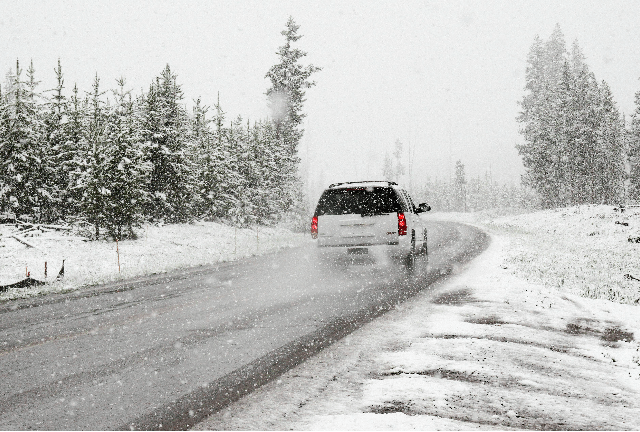How To Apply For a Blue Badge For Disabled Parking
If you are disabled, have limited mobility or a health condition that affects your mobility, you can apply for a Blue Badge.
The Blue Badge scheme is designed to enable drivers and passengers with disabilities as much freedom in getting around as possible and can make travelling by car much easier and more convenient for disabled people and their families.
When displayed in a vehicle, a Blue Badge means that the holder can park, usually free of charge and for as long as they need to, in many places that would otherwise carry a penalty. This is extremely beneficial as it enables you to park as close to your destination as possible.
And even better, a Blue Badge is allocated to an individual holder rather than to a particular vehicle, so they can be used in any car the holder travels in, including taxis and hire cars.
Who Can Apply For a Blue Badge?
You can apply for a Disabled Badge if you have a health condition that affects how you get around, if you have a disability or if you care for a child who has a health condition. You can only hold one Blue Badge at a time.
It’s important to remember that Blue Badges are not just for drivers but for passengers too.
There are certain criteria that make you automatically eligible for a Blue Badge, but you can still apply through an application for blue badge.
You are eligible for a Blue Badge automatically if you:
- are registered as blind
- receive Personal Independence Payment (PIP) and as part of your assessment, you scored 8 points or more on the ‘moving around’ section
- receive the higher rate of the mobility component of Disability Living Allowance (DLA)
- receive War Pensioners’ Mobility Supplement
- have received a lump sum payment as part of the Armed Forces Compensation scheme (tariffs 1 to 8), and have been certified as having a disability that is permanent and substantial
If you’re not automatically eligible:
The application process can be less straightforward if you are not automatically eligible for a Blue Badge, but it is still possible to get one if you:
- can’t use your arms (you must be able to drive to be considered)
- have issues with walking that is either permanent or that your doctor says is likely to last at least a year
- are applying on behalf of a child over 2 years of age who has trouble walking, or a child under 3 years of age who has a health condition that means they need to be close to a vehicle
If you are not automatically eligible for a Blue Badge, you will need to explain your mobility issues in depth as part of your application. It can be worth getting help with your application from the Citizens Advice Bureau.
What Documents You Need To Apply For a Blue Badge:
You will need certain documents and paperwork handy to make an application for a Blue Badge:
- your driving license if you have one
- you National Insurance Number or, if you’re applying on behalf of a child, their child reference number
- the details on your current Blue Badge if you have one, including the number, local council and expiry date
- a photograph of who the Blue Badge is for
- proof of identification, such as a passport, birth or marriage certificate or drivers’ license
- proof of address, such as a utility or Council Tax bill
- if you are automatically eligible for a Blue Badge, you’ll also need your original letter with the decision from the Department of Work and Pensions
Applying online:
You can apply for a Blue Badge, or renew an expired badge, online. If you live in England or Wales, apply online at gov.uk, in Scotland apply at mygov.scot and in Northern Ireland at nidirect.gov.uk.
You may need to send copies of the above documentation through to your local council as part of your application, this varies from area to area so make sure to make a note of what is required.
It is also possible to apply through the post, you’ll need to contact your local council for a paper form.
The application process:
It depends on your local council, but usually the application process to get a Blue Badge takes between six to eight weeks from the date you submit it.
In some cases, your council may need extra information from you about your disability or health condition, or they may want to carry out a mobility assessment with a health professional, in either case you will hear from them in writing first.
If your application is refused:
If your application for a Blue Badge is refused by your local council, they will let you know why in writing.
It is possible to appeal blue badge decision and ask them to review their decision, and it’s especially worth doing so if you have trouble walking more than 80 metres, or if you have problems using your arms which means you cannot use a parking pay machine.
Depending on your local council, you will either need to fill in the decision review request form that comes with your decision letter or write your own letter asking for the decision to be reviewed.
How To Renew Your Blue Badge
If your three years are coming up, It’s recommended to renew your Disabled Badge 6 weeks before your expiry date. Much like the initial application process, you will need the following documents on hand:
- Details of your current Blue Badge
- A digital photo
- Your National Insurance Number
- Proof of identification
- Proof of residency
If you condition has remained the same, then your Blue Badge renewal should be accepted. However, it isn’t a guarantee, and if your renewal does get rejected then you will need to appeal the decision.
How To Display Your Disabled Blue Badge:
It’s important to keep your Blue Badge in good condition, especially the hologram which signifies its authenticity.
To be legally displayed, a Blue Badge must be clearly visible on the dashboard of a parked vehicle. As loose Badges can slip out of view, a Blue Badge holder and wallet makes it easy to display your Blue Badge legally and securely on your dashboard, and keeps it free from dirt and damage.
Where To Park As a Blue Badge Holder:
A Blue Badge can be used in most places, but there are some locations where you cannot use one.
The parking rules vary from area to area, but generally a Blue Badge displayed in a vehicle allows it to be parked free of charge on:
- Streets with pay-and-display machines or parking meters with no time limit
- In designated disabled parking spaces with no time limit (unless otherwise specified)
- Single and double yellow lines for up to three hours (unless there is a ‘no loading’ sign).
It is important to check when parking in private car parks, as these may still carry a charge for Blue Badge holders and you can be fined for not paying to park.
You can use the checker on the Government website to find Blue Badge parking spaces based on a specific postcode.
Overall, apply blue badge is a relatively straightforward process, albeit it can be lengthy. At Mobility in Motion we provide solutions for disabled drivers and passengers to make car travel more accessible, including adaptations to help you get in and out of a car, drive and even lift and stow a mobility device within your car. Get in touch with us online or call us on 0800 288 4422 to find out how we could help you.
More like this

Lifestyle
Home Health Checks: Protecting Air Quality, Warmth & Wellbeing.
As the colder months approach, our homes play a vital role in keeping us warm, comfortable, and safe. Yet winter can also bring challenges such as…

Lifestyle
Prepare Your Vehicle For Winter: Must-Have Features For Disabled Drivers & Passengers
With colder weather on the way, now is the ideal time for disabled drivers and passengers to prepare their vehicles for the challenges of winter. Lower…

News
We Become the Exclusive UK Distributor for Pimas Driver-Control Solutions
We’re excited to announce that Mobility in Motion has become the exclusive UK distributor for Pimas driver-control solutions, including the brand-new Voice Control system. This is…